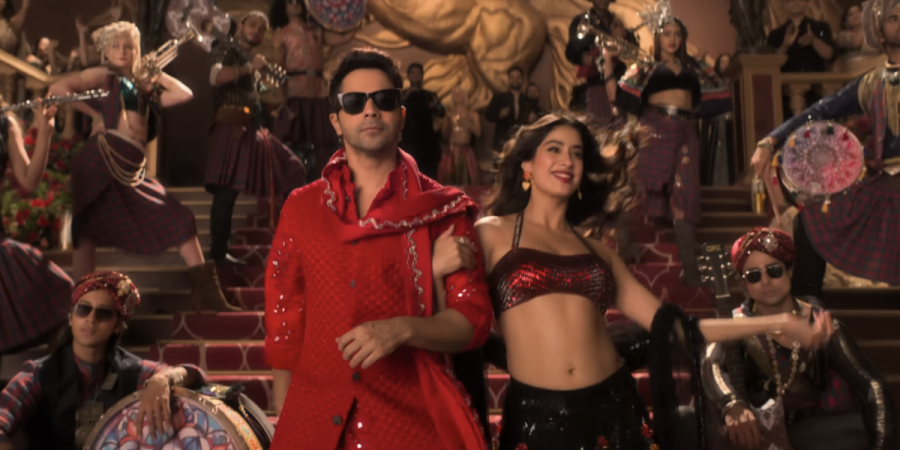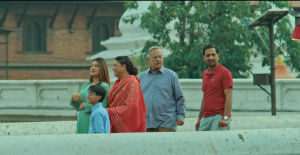Movies
‘Sunny Sanskari Ki Tulsi Kumari’ is ideal for an audience perpetually on their phones
Dharma Productions returns to the familiarity of platforming undeserving nepo kids, sidelining the ‘outsiders’ with underwritten parts.
Tatsam Mukherjee
In spite of what the popular perception might be, I can vouch for the fact that film critics still belong in the more forgiving section of the audience. It’s only when the film isn’t working that the mind wanders and inane details grate that much more.
In Shashank Khaitan’s Sunny Sanskari Ki Tulsi Kumari, a character introduces someone, whose family business is valued at $1 billion. “How much money is that?” a friend asks, and the reply comes–“Rs7,000 crore.” If Khaitan’s film was even slightly sincere and disarming, instead of the smug, gassy Hindi film I’ve come to abhor in the last few years, I would’ve overlooked the arithmetic error.
A billion dollars in 2025, which I’m taking the liberty to assume the year the film is set in, equals Rs8,800 crore. At least. For a film up-to-date with its deluge of pop-culture references (someone describes a prospective groom as a mix of Kohli and Dravid, a proposal’s theme is Baahubali), the calculation mistake is telling.
For an industry that takes pride in being ‘apolitical’, and that too in a populist film by a production house that has been largely pliant, why would the makers take the risk of hinting at the falling rupee? If Khaitan is still calculating one dollar at Rs70, then I’m assuming the script was written more than six years ago. Or they’ve (conveniently) been stuck in pre-pandemic times.
It’s among the most pointless details about the film, and I’m sure few audience members would even be irked by it. I feel silly being fixated on it, but then as I’ve already explained when the film isn’t working–no detail is too small.
Studios and streaming platforms have been harping that films and shows are ‘second screen’–which is to suggest that makers should assume that their viewers are staring at one more screen (their phones, iPads), while watching their film/show. ‘Sunny Sanskari Ki Tulsi Kumari’ is a dream come true for the executives, where it remains a colourful distraction for an audience that is least invested in the art form.
The screening I was in was full of tired parents smirking through the “I’m so middle-class, I complain about overspending at a seven-star hotel” jokes, as their pre-adolescent kids ran up and down the aisle. Dharma Productions, which has released ‘Dhadak 2’ and ‘Homebound’–two of the most topical movies to have emerged out of Hindi cinema in the last year–goes back to familiarity of platforming two undeserving nepo kids, sidelining the ‘outsiders’ with underwritten parts and using its performative self-awareness to excuse itself from even trying to make a remotely original rom-com.
Khaitan’s film features most of the staples of an air-headed ‘family entertainer’–a destination wedding, sangeet performances, overzealous stars confusing loud acting for slapstick–that Dharma is known for making.
Sunny (Varun Dhawan) is in love with Ananya (Sanya Malhotra) and wishes to marry her. But in the film’s first scene, he finds out they’re in a ‘situationship’. She met someone in Italy, Vikram Singh (Rohit Saraf)–who is even richer than the already very-rich Ananya—and the two families are trying to make this match happen because of their financial status.
When he gets Ananya and Vikram’s wedding invite, he has the most logical response: of finding Vikram’s ex-girlfriend of 12 years, Tulsi Kumari (Janhvi Kapoor), who, like Sunny, was erased by the two scheming families. Sunny’s plan of pretending to make Vikram-Ananya jealous by pairing himself with Tulsi is a passable premise for a light-on-its-feet, chaotic romantic comedy.
Written by Khaitan and Ishita Moitra (the core team behind Karan Johar’s ‘Rocky Aur Rani Kii Prem Kahaani’), the film is so consumed with its own wisecracks that it can’t identify even the most fundamental traits of their four primary characters. As Sunny, Dhawan is so badly stuck in the role of the lovesick raja beta (mollycoddled only son) in his late 20s, I have struggled to tell any of his performances apart in the last six years.
Janhvi Kapoor’s Tulsi is the pathetic, needy, under-confident girlfriend, only till the film contrives her to transform into a diva during the umpteen song sequences. Kapoor, who has rarely justified her presence in at least half a dozen films in the last two years, is like that earnest kid at an annual school function who does the bare minimum and mistakes the encouraging applause as unconditional adulation.
Malhotra, a charming, nimble actor through the most forgettable films, is forgettable here. I thought she had the only affecting scene in the film’s climax, but the moment was too little too late in a film that didn’t respect her by giving her the discernible outline of a principal character. Why is Ananya–a mature, strong-headed career woman–so easily pressured into giving up Sunny? What does she like about Sunny, apart from his full-throated loyalty? Why is she even jealous of a post-makeover Tulsi? What does she like about Vikram, a man who could make vanilla seem like a complex flavour? Saraf is a gifted dancer (as the hook-step of Panwadi suggests, where he looks the most effortless in the quartet), but he plays it too straight for a character that looks much larger-than-life on paper.
A crucial bit to land a romantic comedy is for us to give us characters worth rooting for. Alas, I couldn’t be invested in the lives of Sunny, Tulsi, Vikram and Ananya, who seem to all have the dating wisdom of a week-old apple. They don’t know themselves and they don’t know what they expect from their partners. And then Khaitan tries to mask such critical lack of depth in its primary four characters by including a Karan Johar cameo–where he’s playing an unsparing version of himself (almost like a continuation of his role in ‘The Ba***ds of Bollywood’)–as a celebrity guest at the wedding. Now, if only brownie points could buy an honest premise.
Published in a special arrangement with TheWire.in




 12.12°C Kathmandu
12.12°C Kathmandu










%20(1).jpg&w=300&height=200)

